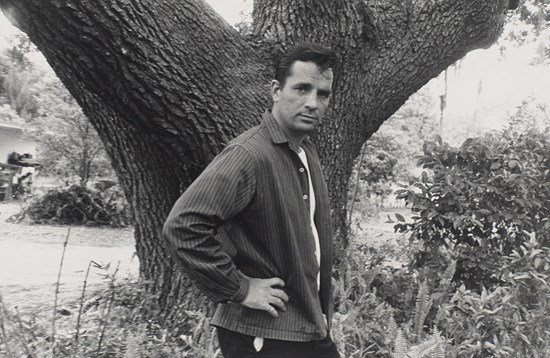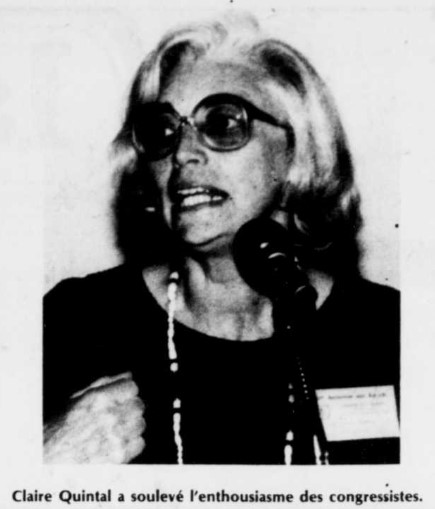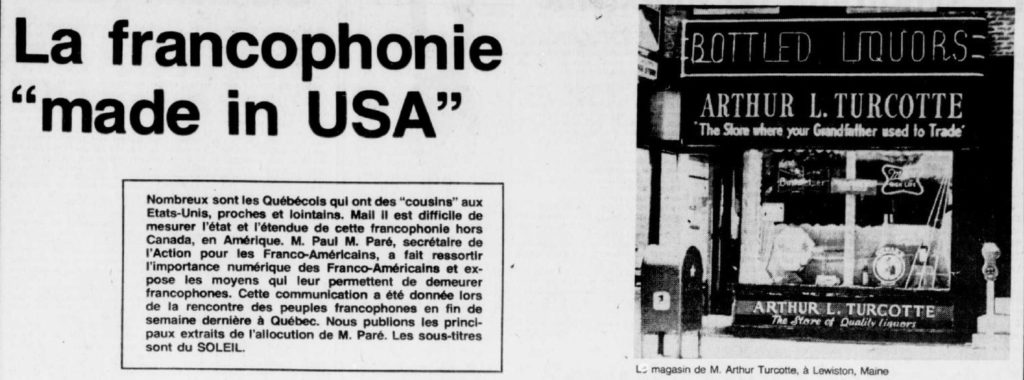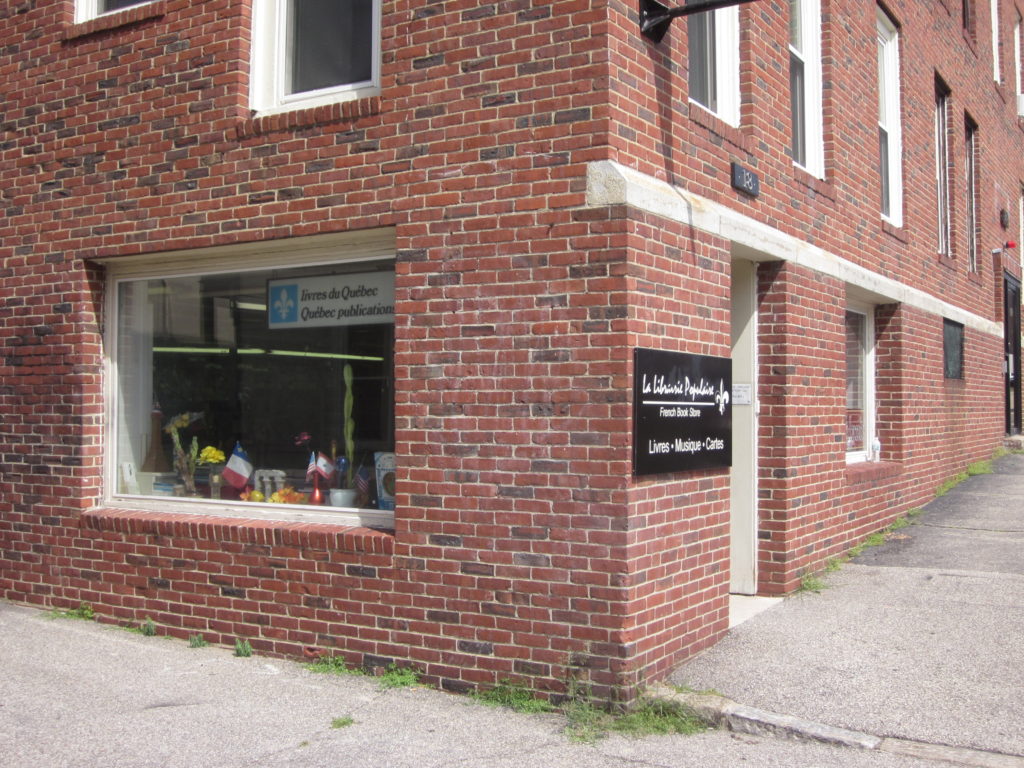“With a little more education and a forty-hour week and some time on our hands—and we’ve become mobile—we looked around,” he said recently. The world of quiet beaches and summer cottages and golf courses no longer seemed so remote. “We see all these things and, we say, ‘Hey, we’d like to have an ice-cream cone, too.’”
– Gilbert Boucher, mayor of Biddeford, quoted in Calvin Trillin, “Où se trouve la plage?” (1973)
Blog posts are inherently inadequate. We write for a reading public that has only so much time and only so long an attention span, amid stiff competition, under harsh conditions—the information must be instantly compelling and significant. In a sense, posts are meant to provide the avant-goût of a subject in a style and with substance that create an appetite for a larger course. More than previous ones, this week’s article requires this caveat, for it purports to cover seventy-five years of history in, oh, 1,500 words. With some luck, it will provide essential context for the next four weeks. Throughout November, this blog will delve into back issues of Le [FAROG] Forum and offer a glimpse of evolving debates in the Franco-American community over the course of about thirty years.
Scholars of varied fields have done a great deal to help us better understand the course of Franco life since 1945. Yves Roby’s Histoire d’un rêve brisé? contains excellent chapters on this period; Alexandre Patenaude’s dissertation (Université de Sherbrooke) on Wilfrid Beaulieu’s Travailleur and its cultural context is a valuable complement. So are more local studies often revolving around cultural survival and French language use, such as Cynthia Fox’s work on Cohoes and communities in New England. And yet—this period is far less explored by historians than the years stretching from the U.S. Civil War to the Great Depression. This should stand as an open invitation to those wishing to enrich the field of Franco-American studies.
As always, when quoting this blog, please give credit where credit is due and cite appropriately.
In the United States, the Second World War was not followed by the rabid nativism that had erupted in the wake of the Great War. Minority ethnic groups faced more subtle pressure to assimilate. Circumstances ranging from improving economic conditions in Quebec to legal hurdles to immigration precluded a renewed influx of Canadians in the northeastern states—at least one of any consequence. Without the reinvigorating cultural effect of immigration, the landscape of Franco-America changed considerably.
The immersive effect of the Second World War had in itself a major impact on ethnic communities. Due to mandatory military service, men drawn from the Little Canadas spent several years in entirely English-speaking settings. Cultural effects were evident in the years following the war. According to Mary MacKinnon and Daniel Parent, “Franco-American veterans born in New England were more likely to be living outside of New England, to have married outside their ethnic group, and to be speaking English at home.”

Franco-Americans experienced the glimmer of postwar prosperity unequally. Many urban Francos reaped the promises of the G.I. Bill with improved access to mortgages and postsecondary education. The tide of opportunity helped people move up (socioeconomically) and move out (geographically) and thus contributed to the gradual break-up of the Little Canadas. But that prosperity can be exaggerated, as northern industry—and not merely textile manufacturing—declined as a result of competition, rising labor costs, and, in time, automation. This structural transition was also deeply felt in the old ethnic enclave. Franco control of certain mayoralties quickly faded in the 1960s.
Simultaneously, as Peter Woolfson noted, rural Franco-Americans faced the declining prospects of the family farm; many would have to sell or encourage their children to seek their fortunes elsewhere.
Franco-Americans were victims of external circumstances in another regard. In the 1960s, the Catholic Church began to face a crisis of declared vocations. Increasingly, it would lack the necessary manpower (or nunpower) to staff schools and social services. In the world of counterculture, in the era of Humanae Vitae, the growing estrangement of younger generations from the Church only accelerated the demise of national parishes.
Indeed, parishes merged. Franco newspapers folded. Schools cut French-language education or closed—sometimes both in quick succession. Observers proclaimed the death of Franco-America… as they would continually over the course of the next fifty years, and as they had even prior to the Second World War, a constant refrain.

Economic change and acculturation were not met with cultural fatalism, at least not in all circles. Persistent in his condemnation of traditional Franco-American elites, editor Wilfrid Beaulieu denounced compromises made by French-language clergy in New England. In the postwar era, he believed these priests and some religious orders to be more responsible for the decline of Franco-American cultural life than Irish-American bishops. (Although he publicly rebuked Mayor Josaphat Benoit for defending the Irish bishop of Manchester.) Beaulieu was also quick to assail the moderation of certain other newspapers and the Union Saint-Jean-Baptiste.
In encouraging the preservation of French-Canadian culture, Beaulieu was joined by Adolphe Robert of the Association Canado-Américaine, Fr. Adrien Verrette of the Société historique franco-américaine, and the Dominican Thomas-M. Landry, who for a time led the Conseil de la vie française en Amérique. These intellectual leaders’ dedication to survivance could only do so much against the structural forces of the day. Ultimately, what common ground existed between them broke up over priorities—and over whether Franco-American life could endure amid the loss of either the language or the ancestral faith.
The 1960s and early 1970s seemed to announce a change in fortunes. Cold War concerns led the federal government to look more kindly on—and find monies for—bilingual education and “foreign” language acquisition. In dubious ways, the Black freedom movement inspired ethnic white minorities to secure their own identity and return to their cultural roots, as would the series Roots, appropriately. (Historian Matthew Frye Jacobson’s work is a good guide to the subject.)
Not without conflict, Franco-American intellectual leadership moved away from the old organizations and onto university campuses. It found distinguished scholars, teachers, and advocates in Madeleine Giguère, Paul Chassé, Gérard J. Brault, Claire Quintal, Armand Chartier, and others. A rising generation of Francos renewed with their origins not in church halls or as eager members of the ACA, but in classrooms and college clubs.

This process was most evident at the University of Maine where a new ethnic consciousness developed. The young turks of the Franco-American Resource Opportunity Group (FAROG) challenged the ideology of survivance, which many believed to have undermined personal fulfillment, deterred higher learning, and stunted Franco-Americans’ ability to adapt to modernity. Many youths were evidently not equipped for a changing economy where one could not easily find work in a mill and remain there for forty years. Others would challenge the psychological, economic, and social barriers keeping Francos from the services they most needed.
Events in Canada loomed large in this Franco-American reawakening. A transnational congress on the French language had joined elites north and south in 1952; Quebec newspapers continued to publish Franco-American news until 1960. As Pierre Lavoie recently argued, Franco-Americans also found representation in cinematic productions in the homeland. As familial ties eroded, the emergence of neo-nationalism and the first steps of the independence movement in Quebec drew attention in New England. An independent, French-majority nation in North America would, it seemed, provide legitimacy and visibility to the estranged cousins of the U.S. Northeast.
That attention was reciprocated to a great extent by Quebec academics seeking to better understand the diaspora. After the likes of Robert Rumilly and the scholars of the 1960s would come Yolande Lavoie, Yves Roby, Pierre Anctil, Jean Lamarre, and Yves Frenette for instance. The Quebec government, too, looked south as it sought international prestige and began to see culture as a gateway to investment.
Since then, the French-language press in Quebec has engaged in the perpetual rediscovery of Franco-Americans. Every few years, since the 1970s, a journalist for La Presse, Le Devoir, or Radio-Canada visits New England and finds with amazement that Franco-Americans are still to be found. Robert Perreault has ably described this reaction. Although Franco-Americans are experiencing a process of acculturation common to all ethnic groups, at every “rediscovery” there are New Englanders ready to welcome reporters en français.

In fact, it is unfair to view the last fifty or seventy-five years of Franco-American history as a gradual slide to extinction. There has been a turn-over in organizations—with new groups forming to meet the demands of a new era. They are now less likely to be denominational or to operate in French; these organizations take a broader view of cultural heritage that has enabled them to connect meaningfully with the non-Franco community.
While Franco-Americans eventually buried the ACA along with schools and parochial organizations, our period also witnessed the creation (in chronological order) of the Fédération féminine franco-américaine; the clubs Richelieu; the FAROG and then the Franco-American Centre in Orono; the French Institute at Assumption College; another Franco-American Centre, in Manchester; the Gendron Franco Center; a number of genealogical and heritage societies, such as the Northern New York American-Canadian Genealogical Society in Dannemora; and so on. In the twenty-first century, yearly rendez-vous like Winooski’s French Heritage Day and the New Hampshire PoutineFest continue to showcase local French roots, as do lectures organized by historical societies. Artists from Martha Pellerin to Josée Vachon have also done a great deal to preserve French-Canadian traditions.
The prognosis for Franco-American culture in the Northeast is mixed. The pace of language loss has been uneven across the region. According to Eric Joly, 40 percent of Berlin’s population spoke French at home in 1990, a generation after the closing of the city’s last bilingual school. But this was a high-water mark among northeastern communities. Young Francos are more likely to learn French as a second language at school than at home. (Joly also found that they are less likely to self-define in ethnic terms, as either French, French-Canadian, or Franco-American.)
Major academic colloquia are few and the support of a National Materials Development Center for French is long gone. Research is no less plentiful and thus mirrors a vibrant cultural life that has emancipated itself from ethnic neighborhoods and smoky church basements.

The scars of old interethnic battles—and the legacy of marginalization and discrimination—have slowly healed and Francos have made up considerable ground relative to other groups. Educational attainment for young Francos is now approximately equal to the American average, for instance. Paul LePage’s governorship attests to a healthy diversity of opinion among Francos—and also, admittedly, to less healthy unexorcised spirits concerning Americanism and immigration. Generally, though, the candidacy of a Michaud or Ayotte for statewide office does not raise eyebrows.
It may be that Franco-Americans, now fewer in numbers, can at last have their meat pie and eat it too. Having passed through the double trial of nativism and ethnic transition, they can celebrate their culture and feel as American as apple pie.
Great post. I have just begun to struggle with these questions as a 1st-2nd-3rd generation French-Canadian (depending on which parent/grandparent.) Are any of the French articles that you linked to available in English? One question is that the Irish and Italians to pick just two seem to be fine culturally even though I doubt many speak Gaelic or Italian.
Thank you for commenting. The MacKinnon-Parent article is in English; I can provide a copy if you send me a private message. Roby’s magisterial work (“Dreams and Realities”) provides a solid synopsis of the 1940s through the 1980s and is also worth perusing. I claim no expertise on the Irish and Italians, but I do think there are a lot of parallels to Franco-Americans’ experience, with acculturation simply occurring over different time frames (and nativism being expressed differently in each case). I would think that older Italian Americans would bemoan the gradual loss of the cultural connection to the old country; I don’t know how much of distinctively Irish culture remains in the U.S. Actually, in regard to the Irish, you might enjoy reading Tim Meagher’s “Inventing Irish America,” which focuses on Worcester.
Pingback: This week’s crème de la crème — November 2, 2019 | Genealogy à la carte